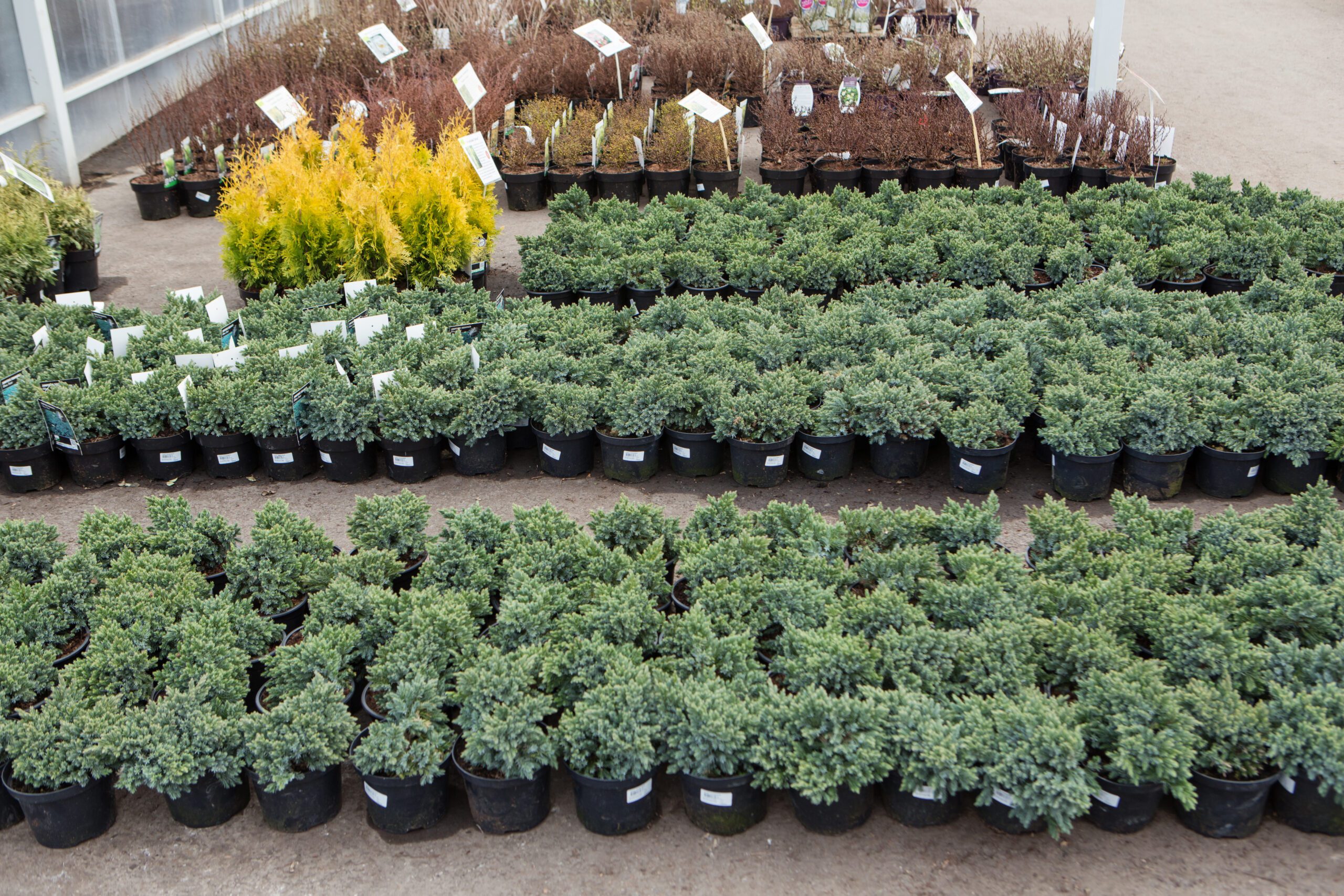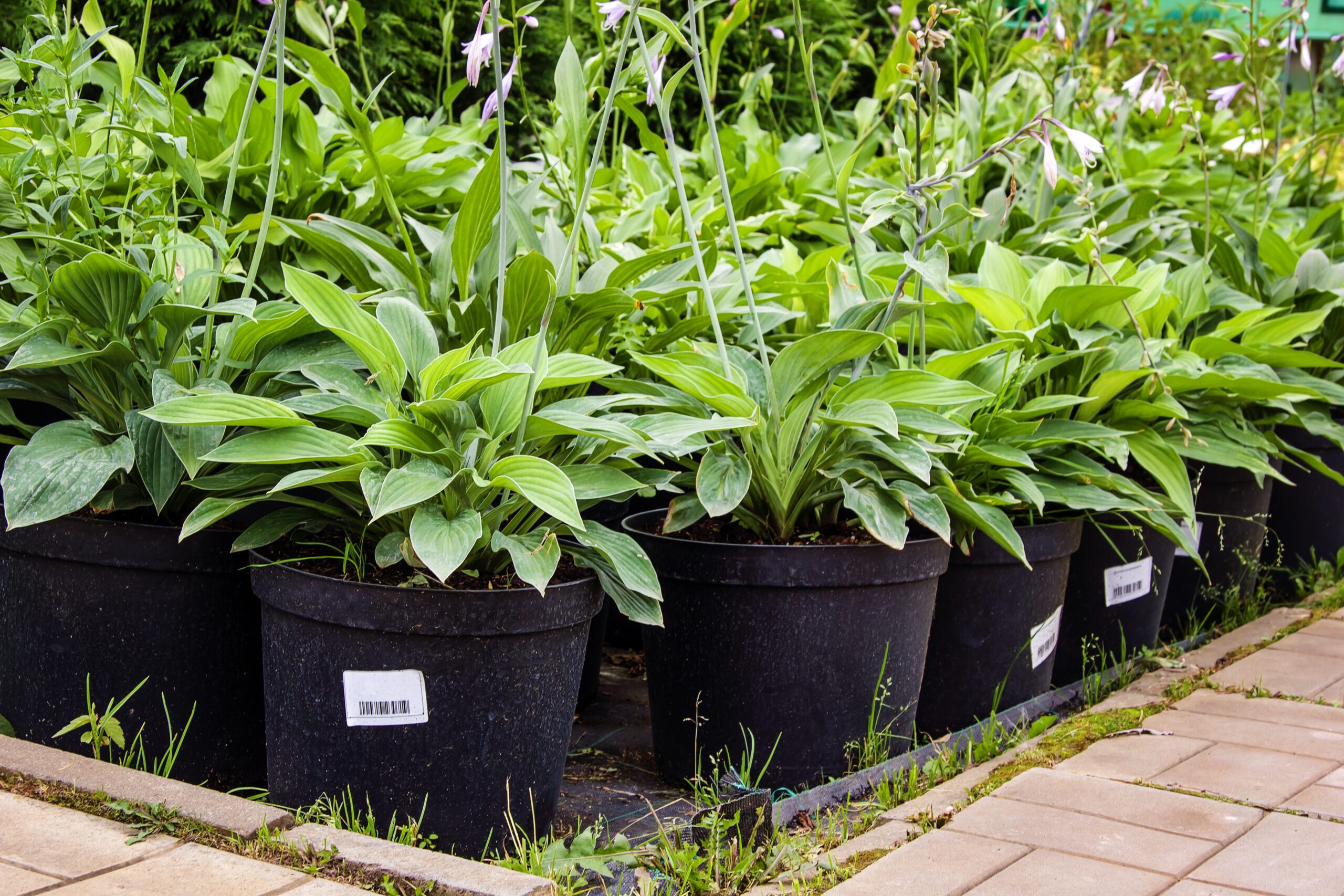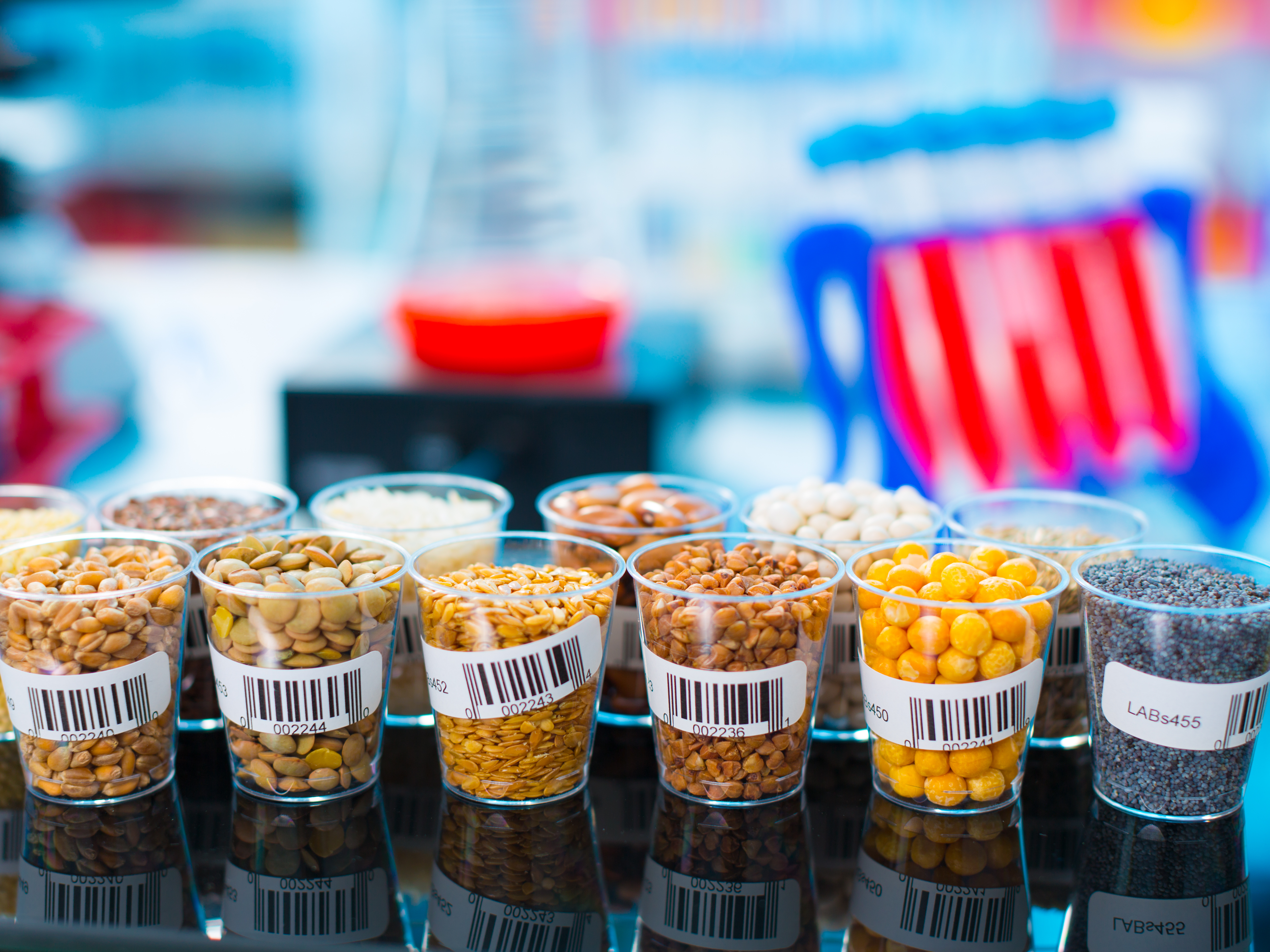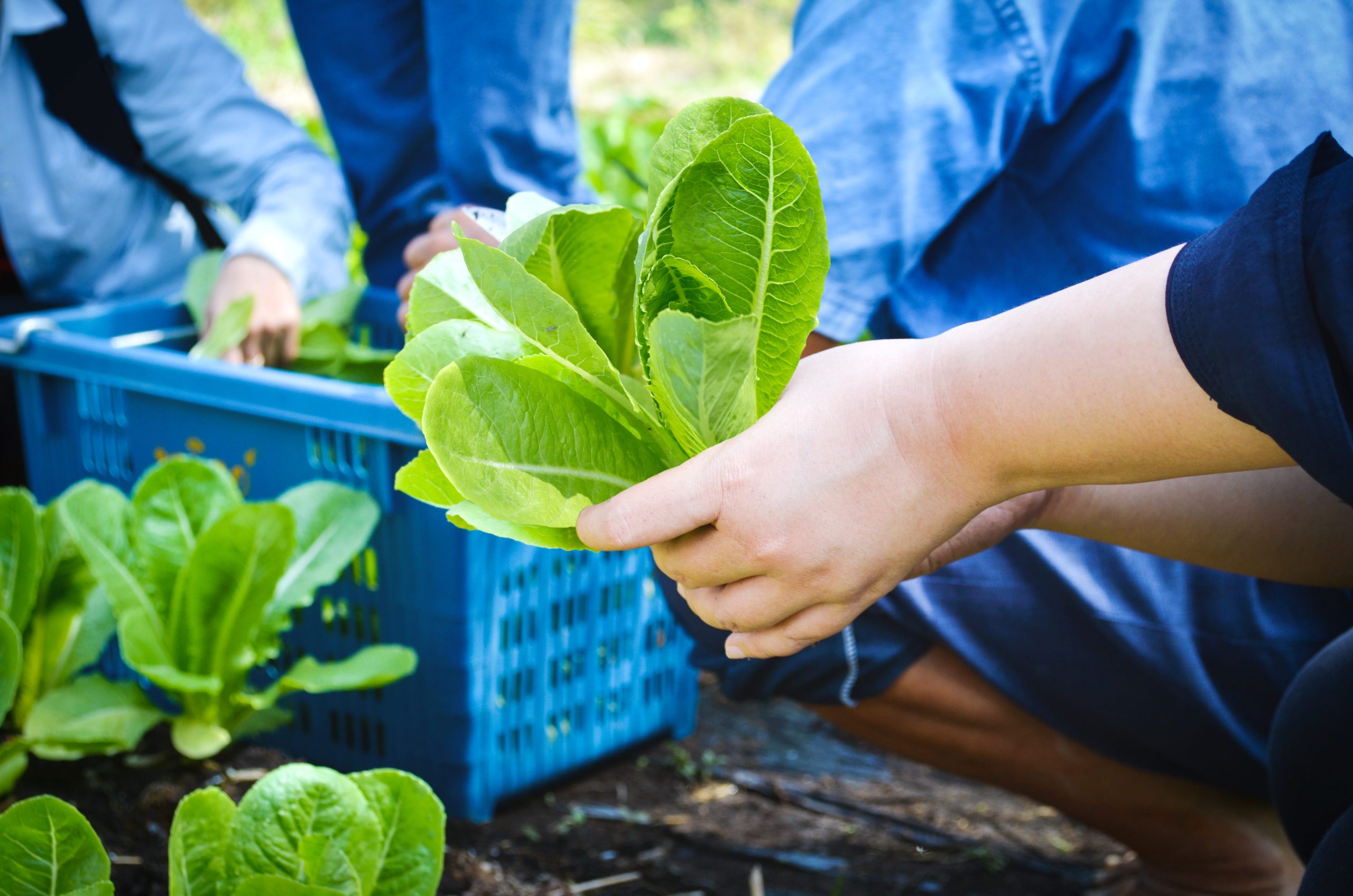Horticultural labels and tags play a crucial role in the horticulture industry, containing a lot of important, sometimes mandatory information that needs to be readable throughout the time a plant is residing in the nursery, greenhouse, and retail outlet. But how does a well-printed horticultural label ensure peace of mind for all supply chain stakeholders?
In this article, we will explore the importance of print readability on horticultural labels and discuss the use of Thermal Transfer Printing technology to meet the specific requirements of the industry.
The specific conditions in greenhouses and nurseries put high demands on the quality of the print. Constant exposure to water, high humidity, agrochemicals, fertilisers and intense sunlight can easily deteriorate the horticultural label’s ink and substrate. To ensure longevity, both the ink and substrate need to be specially chosen to withstand these harsh circumstances. In addition, the movement of the plants in the logistical chain and retail channel needs to be considered to ensure the printed material resists the friction and abrasion it is exposed to.
Plant passport: A must for horticultural plant labels
Navigating the complex landscape of labelling regulations is crucial for horticultural businesses. Exploring the specific regulations and standards in your region or country is essential to ensure compliance and promote transparency.
As of 14 December 2019, the European Union has implemented legislation, making the plant passport mandatory. According to this legislation, all plants with a pot size of 10 centimetres or more require a plant passport before they can be traded.
The plant passport serves as proof that phytosanitary requirements are met and it consists of a number of mandatory elements such as:
- Botanical name
- Company registration number
- Traceability/batch codes
- Two letter country code of the originating country
- EU flag
- The words “Plant Passport” in one of the EU languages and in English
Whether printed directly on the pot or on a label, the plant passport must be readable throughout the entire logistical process. By providing a comprehensive overview of the labelling regulations relevant to the horticultural industry, businesses can ensure their labels meet legal obligations, promote transparency, and instil confidence in consumers. It is crucial to stay updated on any changes or updates to labelling regulations to ensure ongoing compliance and avoid any potential penalties or setbacks in the marketplace.

Tips on designing effective horticultural labels: Layout, readability, and visual appeal
When it comes to designing effective horticultural labels, it is important to consider not only the placement of essential information but also the overall layout, readability, and visual appeal of the label. The design of a label can greatly impact a consumer’s perception of the product and their willingness to purchase it.
- Font size and style:
- Choose a clear, legible font that is easy to read, even at a glance.
- Avoid small or overly decorative fonts that can be difficult to read, especially for older individuals or those with visual impairments.
- Placement of information:
- Prominently display crucial details such as the plant’s name, care instructions, and safety warnings.
- Organise the information in a clear manner for easy identification and follow any regulatory requirements such as the ones for the Plant Passport in EU.
- Use of symbols, graphics, and color coding:
- Use symbols to represent sun exposure requirements or watering frequency for quick visual reference.
- Utilise color coding to differentiate between different types of plants or indicate specific care instructions.
- Visual appeal:
- Invest in an eye-catching layout and appealing colors for the label.
- Create a well-designed label that stands out on the shelf and conveys a sense of quality and professionalism.

Harnessing the power of barcodes and QR codes
Alongside texts and graphics, incorporating barcodes or QR codes on horticultural labels can revolutionise the industry in several ways such as:
- Facilitating traceability: Barcodes and QR codes allow for easy tracking of a product’s journey from the grower to the retailer, ensuring transparency and accountability.
- Efficient inventory management: These technologies enable quick monitoring of product location and status, reducing errors and minimising stockouts.
- Empowering consumers: By scanning the barcode or QR code with their smartphones, consumers can access detailed product information such as plant care instructions, nutritional facts, allergen information, and customer reviews.
- Streamlining processes: Implementing barcodes or QR codes simplifies inventory management and enhances operational efficiency in the horticultural supply chain.
- Enhanced customer experience: Offering additional information through these technologies empowers consumers to make informed purchasing decisions and increases overall satisfaction with the product.
Utilising barcodes and QR codes on horticultural labels brings substantial benefits to the industry. By embracing barcodes and QR codes, businesses can improve efficiency, enhance the customer experience, and strengthen their position in the market.

Embracing sustainable labeling solutions
As sustainability becomes increasingly important, horticultural businesses are recognising the need to embrace eco-friendly labeling options. By opting for sustainable label materials and reducing waste in label production, the industry can make a positive impact on the environment and enhance consumer perception.
Exploring sustainable label materials:
- Biodegradable options: Utilising biodegradable label materials, such as those made from plant-based or compostable materials, can significantly reduce the environmental impact of horticultural labeling. These materials break down naturally over time, minimising waste and pollution.
- Recyclable options: Choosing recyclable label materials, such as those made from paper or cardboard, allows for easy recycling after use. This promotes the circular economy and reduces the consumption of finite resources.
- Renewable resources: Labels made from renewable resources, such as bamboo or sugarcane fibers, offer a sustainable alternative to traditional materials. These resources can be replenished, making them more environmentally friendly.
By choosing sustainable label materials, reducing waste in production, and demonstrating environmental responsibility, you can enhance brand reputation and contribute to a more sustainable future. Such practices not only benefit the environment but also aligns with consumer preferences, ultimately driving the industry towards a more sustainable and responsible path.

Printing horticultural plant labels with Thermal Transfer Ribbons
The printing technology chosen for horticultural labels is just as crucial as selecting the appropriate label or tag to print on. Thermal Transfer Printing has gained widespread popularity in the horticultural industry due to its proven track record in durability.
One of the main components of Thermal Transfer printers is Thermal Transfer Ribbons. Thermal Transfer Ribbons are the ideal means of printing durable horticulture tags and labels. Depending on the substrate, either a wax-resin or a resin ribbon will provide the print result with the required level of durability.
The expected lifetime of a horticultural label is an important factor in determining what ribbon needs to be used. In general, a basic wax-resin ribbon is suitable for fast moving annual plants in supermarket channels while highly durable resin ribbons are for perennials, shrubs and trees that reside for longer periods in nurseries or garden centres. These ribbons provide maximum resistance to environmental factors such as moisture, UV exposure, and abrasion, ensuring that the print remains legible and intact throughout the plant’s lifespan.
Thermal Transfer Printing, combined with the right choice of ribbon, offers several benefits for horticultural labels:
- Durability: Thermal Transfer Printing provides long-lasting prints that can withstand harsh environmental conditions, ensuring that important information remains legible throughout the plant’s lifecycle.
- Versatility: Thermal Transfer Ribbons are compatible with a wide range of label materials, including synthetic materials that offer enhanced durability and resistance.
- Customisation: This printing technology allows for high-quality, customisable prints, including barcodes, QR codes, logos, and other branding elements, providing a professional and visually appealing label.
- Efficiency: Thermal Transfer Printing is a fast and efficient printing method, allowing for high-volume label production to meet the demands of the horticultural industry.
Thermal Transfer Printing with the appropriate Thermal Transfer Ribbons is a reliable and effective solution for printing durable horticultural tags and labels. By considering the above aspects and selecting the right ribbon type, businesses can ensure that their labels maintain their quality, withstand environmental challenges, and effectively convey important information to consumers and industry professionals.

Steps in determining the right ribbon for your horticultural label
- Determine the requirements: Consider the lifetime of the print, requirements in terms of resistance, and conditions in the nursery.
- Choose the material to print: Synthetic materials, such as polystyrene (PS), polyethylene (PE) and vinyl are commonly used for horticultural labels, while horticultural pots are typically made from polypropylene (PP).
- Determine the printer type: Flat-head or near-edge printers. Flat-head printers have a longer exposure time of the printhead to the substrate and ribbon, ensuring the strongest fixation of the ink. On the contrary, near-edge printers are suitable for higher speeds and are also used in in-line printing systems. The short exposure time to the printhead requires a special release layer for fast ink transfer.
- Choose the appropriate ribbon: Consult with a trusted thermal transfer ribbon supplier to find the ribbon that matches all of the above requirements.
- Print & test: After selecting the ribbon, print the horticultural label and test it in real-life circumstances to ensure its durability and readability.

Consulting your Thermal Transfer Ribbon supplier
Suppliers of Thermal Transfer Ribbons often have a good database on different substrate-ribbon combinations and facilities to test the printed result. It is therefore recommended to consult your ribbon supplier to quickly determine which ribbon is most suitable for your horticulture tags and labels. Their expertise and knowledge can help ensure that your labels meet the necessary requirements for durability and print readability.
In the horticulture industry, the readability and durability of horticultural labels are of utmost importance. Thermal Transfer Printing technology, combined with the right Thermal Transfer Ribbons, offers a reliable solution for meeting industry requirements. By carefully selecting the appropriate ribbon, considering the requirements and conditions, and consulting with your ribbon supplier, you can ensure that your horticultural labels provide peace of mind for all stakeholders in the horticultural supply chain.
